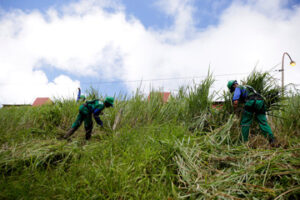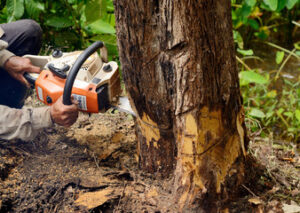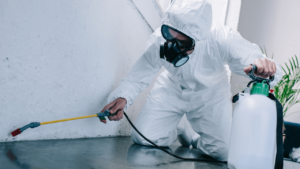Kitchen remodeling projects can take a significant amount of time and money. A professional contractor knows how to manage timelines and budgets efficiently, keeping the project on track.

They also know how to schedule tasks so they happen in the right order and meet building codes requirements. Look for a contract that includes a detailed breakdown of costs and a process for handling unforeseen issues. Contact Kitchen Remodeling Contractor Bucks County for professional help.
Kitchen remodeling can be a significant undertaking that impacts your home life and finances. As such, it is essential that you select a contractor with the right qualifications to meet your expectations and complete the work on time and within budget. A reliable kitchen remodel contractor will be licensed and insured, as well as possess the skills, work ethic and track record to guarantee satisfaction.
When interviewing potential contractors, ask for examples of their previous work and request a detailed estimate. This will give you a sense of their capabilities and the quality of their work, as well as allow you to compare estimates. In addition, it is a good idea to ask about any professional affiliations and certifications that may indicate their commitment to the industry and high standards.
You can also check online reviews and local forums for recommendations on contractors. Once you have a shortlist of candidates, ask for references that include contact information so that you can reach out to them and conduct follow up interviews. Ask about the project duration, the contractor’s responsibilities, payment schedules and whether there is any warranty offered.
Before beginning a renovation, it is important that you have a clear vision of what you want your finished product to look like. Take the time to research designs and materials that you love and create a list of features you would like to incorporate into your kitchen. This will help you communicate your vision more effectively with contractors and will enable you to get a more accurate estimate.
As you narrow down your options, ask each contractor for a copy of their license certificate and insurance policy, as well as proof of liability and worker’s compensation coverage. This will ensure that they meet your state’s licensing requirements and have protection in place should an unforeseen event occur during the project. A reputable contractor will have no problem providing you with this information and will happily validate their insurance details through their insurer for your peace of mind.
A kitchen remodel requires specialized expertise in kitchen design and construction to make the most of your space, enhance functionality and increase the value of your home. By asking the right questions and conducting thorough background checks, you can find a qualified contractor that shares your vision for a dream kitchen and will bring it to life on schedule and within budget.
Experienced
Renovating your kitchen is an investment, and choosing the right contractor is critical to ensuring that your project goes smoothly. Research potential contractors through online reviews and word of mouth. Make sure that they have the experience required for your project, and ask to see their portfolio of previous work. You should also be sure to verify their licensing and insurance, as well as request references from past clients.
Kitchen remodeling projects often present unique challenges, and an experienced contractor will be better equipped to handle them. They will be able to offer solutions that address both aesthetic requirements and functional needs, such as creating storage space without expanding the footprint of your kitchen or adding energy-efficient appliances. They will also be able to estimate the timeline for the project and manage unexpected costs more effectively.
Choosing the right materials for your kitchen is important to ensure that your new space is both practical and beautiful. A quality selection will provide long-term functionality, while a design that incorporates a variety of lighting options (from task and pendant lights to recessed and track lighting) can enhance the ambiance. It is also a good idea to upgrade to high-efficiency appliances, which will save money and reduce your carbon footprint.
A reputable kitchen remodeling contractor will have years of experience working on a wide range of projects, from simple cosmetic upgrades to full-scale redesigns. Their team of experts will be able to help you choose the best products for your kitchen, including cabinets, countertops, and flooring. They will also be able to assist with obtaining any necessary permits, handling inspections, and navigating regulatory compliance.
A successful kitchen remodel requires a lot of planning and communication between you and your contractors. Vetting candidates thoroughly, establishing and communicating budgetary constraints upfront, and enforcing clear expectations contractually will all ensure that your project unfolds as you envision it. When evaluating prospective kitchen contractors, look for design talents, transparency and accountability, quality tradespeople, and open communication styles that align with your preferences. These factors will all contribute to a remodel that is on-time, on-budget, and the kitchen of your dreams.
Detailed Estimates
When choosing a contractor, it’s essential to get detailed estimates from a number of them. This will allow you to compare costs, project timelines and payment schedules before making your final decision. Be wary of contractors that provide significantly lower estimates than others; they may be hiding costs or using low-quality materials in their work.
Kitchen remodels are complex and involve many different aspects of construction. Moreover, they require the correct sequencing of work in order to meet building code requirements and ensure that inspections are passed. Consequently, delays at any stage of the process can throw off the entire timeline and increase costs for the homeowner. As a result, you should hire a contractor with a proven track record of timely completion of projects in the past.
In addition to a thorough interview process, look for a contractor who is willing to work with you and provide creative solutions to your kitchen remodeling challenges. It’s important to communicate your goals for the remodel, whether you’re looking to upgrade a single fixture or rework the entire layout. You should also consider your budget and the timeframe in which you wish to complete the remodel. A good contractor will take the time to listen carefully to your needs and offer you practical ways to achieve your goals within your budget.
Once you have narrowed down your list of potential contractors, ask for references from previous clients. Contacting them can provide valuable insights into the contractor’s reliability, work quality and customer service. If possible, visit some of the contractor’s completed projects to see their work firsthand.
During the estimate process, ask for a breakdown of costs including labor, material and profit margins. This will allow you to compare estimates and identify any discrepancies. Also, be wary of contractors who provide estimates that are significantly lower than others; they may be using low-quality materials or cutting corners to win the job.
Once you’ve chosen a contractor, make sure all the terms of the contract are clearly explained and signed by both parties. This will help reduce misunderstandings and conflict down the road.
Communication Skills
A kitchen contractor is more than just a skilled tradesperson; they are a culinary artist, orchestrating a symphony of design, functionality and craftsmanship. Choosing the right one is like finding the perfect partner – you need someone who not only understands your vision but breathes life into it, turning it into a reality.
A good contractor will be able to convey your project goals clearly, and in the language you understand. They will also be able to respond promptly and effectively to your questions and concerns. Good communication is vital during any remodeling project and will help to reduce miscommunication, which can lead to delays and cost overruns.
When evaluating potential contractors, gather personal and professional recommendations from friends and family members who have undergone similar projects. Also, search online for reviews and ratings by previous clients. Using these sources will help you narrow your selection and make an informed decision.
Once you have compiled a list of potential contractors, schedule consultations to discuss your project and gauge their level of interest and understanding. You should also ask about their work history, business practices, and licensing and insurance coverage. A contractor with a history of positive client feedback is likely to perform well on your project.
It is important that the contractor communicates regularly throughout the remodel. This includes weekly meetings to discuss progress and address any issues. It is also helpful to receive progress reports, and to visit the job site periodically to view the work in person.
A professional kitchen remodeler will keep you updated every step of the way. They will provide you with an estimated timeline for completion and will work within your budget to achieve the desired results. They will also be able to adjust the timeline if necessary due to unforeseen circumstances. In addition, they will be able to provide you with a written contract detailing the scope of work, payment terms and specific deliverables. This will prevent misunderstandings and provide you with peace of mind. It is also a good idea to create a folder or file where you can store all relevant information and communications regarding the project, including any contracts, change orders or records of payments.








